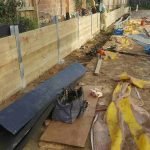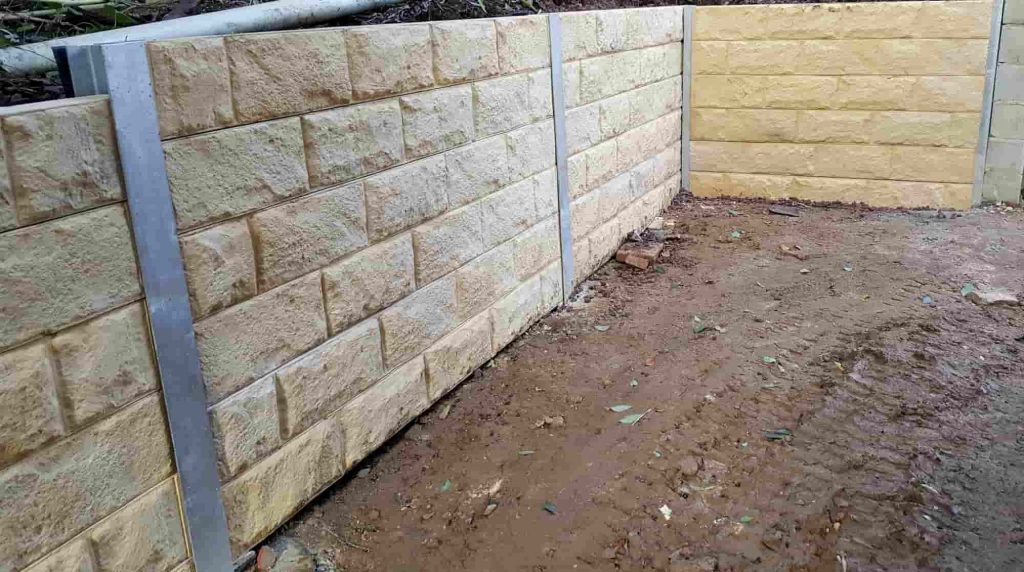Introduction
When it pertains to landscaping and building, one location that typically gets overlooked is the importance of appropriate retaining wall installation. Whether you're handling timber sleeper walls, concrete sleeper structures, or H beam systems, the significance of experience can not be overstated. In this article, we're diving deep into The Value of Experience in Retaining Wall Setup Projects We'll check out why employing a professional with knowledge in this field can save you time, money, and a great deal of headaches.
The Value of Experience in Retaining Wall Setup Projects
Retaining walls serve a vital function in landscape architecture; they keep back soil and prevent erosion while also boosting the visual appeal of your residential or commercial property. However, the underlying mechanics are anything however basic. Without appropriate installation by a knowledgeable professional, these structures can stop working significantly. Experienced professionals understand the subtleties involved-- from product selection to drain systems-- making sure that your wall not only stands the test of time but likewise performs its desired function flawlessly.
Why Select Timber Sleeper Walls?
Timber sleeper walls are an appealing option for many property owners looking to include a natural touch to their gardens. However why ought to you choose this material over others?
Aesthetic Appeal: Lumber provides a rustic beauty that blends seamlessly with nature. Cost-Effectiveness: Compared to concrete choices, timber can be more economical. Sustainability: Using properly sourced lumber helps reduce your carbon footprint.Challenges with Lumber Sleepers
While lumber has its benefits, it also provides difficulties:
- Durability: Wood can rot and degrade with time if not treated properly. Maintenance: Routine upkeep is required to maintain its look and structural integrity.
Understanding Concrete Sleeper Walls
Concrete sleeper walls have actually gained enormous appeal due to their effectiveness and durability. So what makes them a favored choice?
Strength: Concrete is naturally strong and able to withstand significant pressure. Low Maintenance: Once set up correctly, these walls require minimal upkeep. Versatility: Available in numerous styles and surfaces, concrete sleepers can match any aesthetic.Common Problems with Concrete Sleepers
Even though concrete has its benefits, issues can still develop:
- Cracking: Poor installation or inadequate drain can result in fractures over time. Weight Considerations: The heavy nature of concrete may require specific devices for transport and installation.
What Are H Beam Systems?
H beam systems offer a modern option for retaining walls that demands attention for their special structure:

Possible Disadvantages of H Beams
While innovative, H beams https://telegra.ph/Enhancing-Curb-Appeal-with-Skillfully-Crafted-Retaining-Walls-by-Leading-Contractors-02-08 are not without their limitations:
- Cost Implications: They tend to be more pricey than both wood and concrete options. Specialized Understanding Required: Setting up H beams requires particular proficiency that not all professionals possess.
Experience Matters When Selecting Materials
The choice between timber sleeper walls, concrete sleepers, or H beam systems isn't just about looks; it's about what works best for your particular conditions.
Soil Type Consideration
Different types of soil respond differently under tension:

- Sandy soils drain pipes well but might not offer stability. Clay soils hold water which may increase pressure on retaining walls.
Professional installers examine soil structure thoroughly before proceeding with any project.
Climate Conditions Impact Choices
Your local environment plays a substantial function in material selection:
- Areas susceptible to heavy rains might require more robust drainage solutions. Extreme temperature levels might affect products differently; wood may warp while concrete might crack.
Drainage Solutions for Keeping Walls
Good drainage is essential for long-lasting retaining wall efficiency-- this is where an experienced installer shines.
Types of Drainage Systems
French Drains- A trench filled with gravel consisting of a perforated pipe that reroutes water far from the wall.
- Small openings at the base of a wall allowing trapped water to leave safely.
- Fabric layers that help handle water circulation while preventing soil erosion behind the wall.
Consequences of Poor Drainage
Improper drain results in hydrostatic pressure build-up which can cause considerable structural failure over time.
Local Laws and Permitting Needs
Another aspect where experience counts is navigating through regional policies concerning retaining wall installations.
Understanding Zoning Laws
Before starting any job, acquainting yourself with zoning laws is important:

- Setback requirements may determine how far your wall requires to be from residential or commercial property lines.
Permitting Process
Obtaining the necessary authorizations typically needs professional help:
Plans must be prepared according to local codes. Inspections might be required during different phases of construction.FAQs About Retaining Wall Installation
1. What's the typical life-span of a timber sleeper wall?
Timber sleeper walls normally last between 10-20 years depending upon maintenance practices and ecological conditions.
2. How do I understand when my retaining wall needs repair?
Signs like visible cracks, leaning structures or extreme water pooling indicate it's time for repairs.
3. Can I install a retaining wall myself?
While DIY tasks are tempting, it's suggested to speak with professionals due to intricacies involved.
4. What type of retaining wall is best for my property?
It mostly depends on soil type, environment conditions along with your aesthetic preferences.
5. How much does it cost to set up a keeping wall?
Costs vary extensively based upon products used-- expect anywhere in between $15-$50 per square foot.
6. Do I need planning approval for a maintaining wall?
Most jurisdictions require planning permission for walls over specific heights or close to home boundaries.
Conclusion
In summary, purchasing knowledgeable experts for your retaining wall setup tasks settles significantly in regards to toughness and aesthetics-- whether you opt for wood sleepers, concrete sleepers or H beam systems. Understanding regional regulations and ensuring correct drain are simply as essential as selecting quality products-- all elements best dealt with by skilled professionals who understand what they're doing!
Remember that overlooking these aspects can lead to costly errors down the line; therefore stressing again simply how crucial experience is when it boils down to making these crucial decisions about your landscape architecture projects!